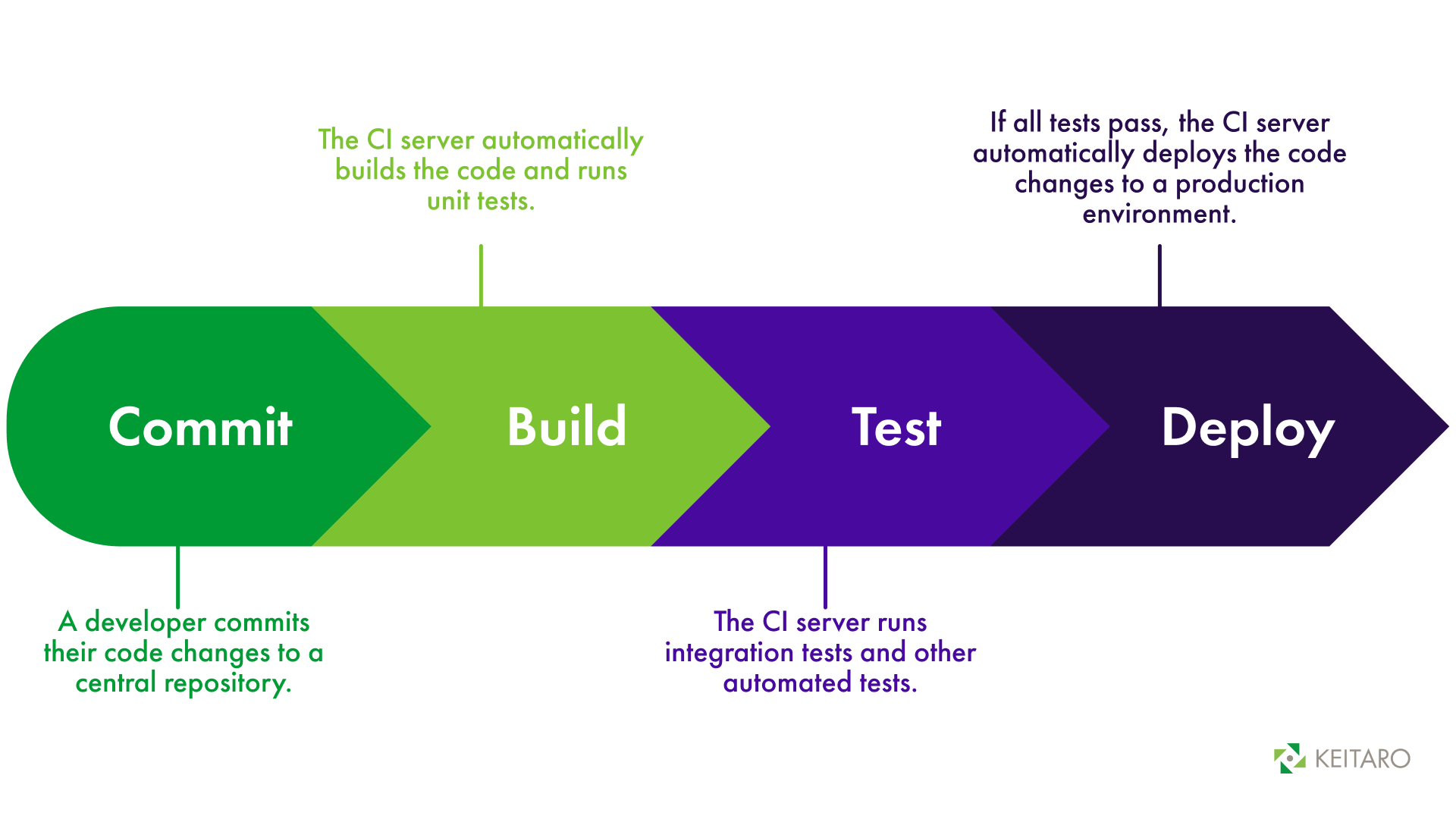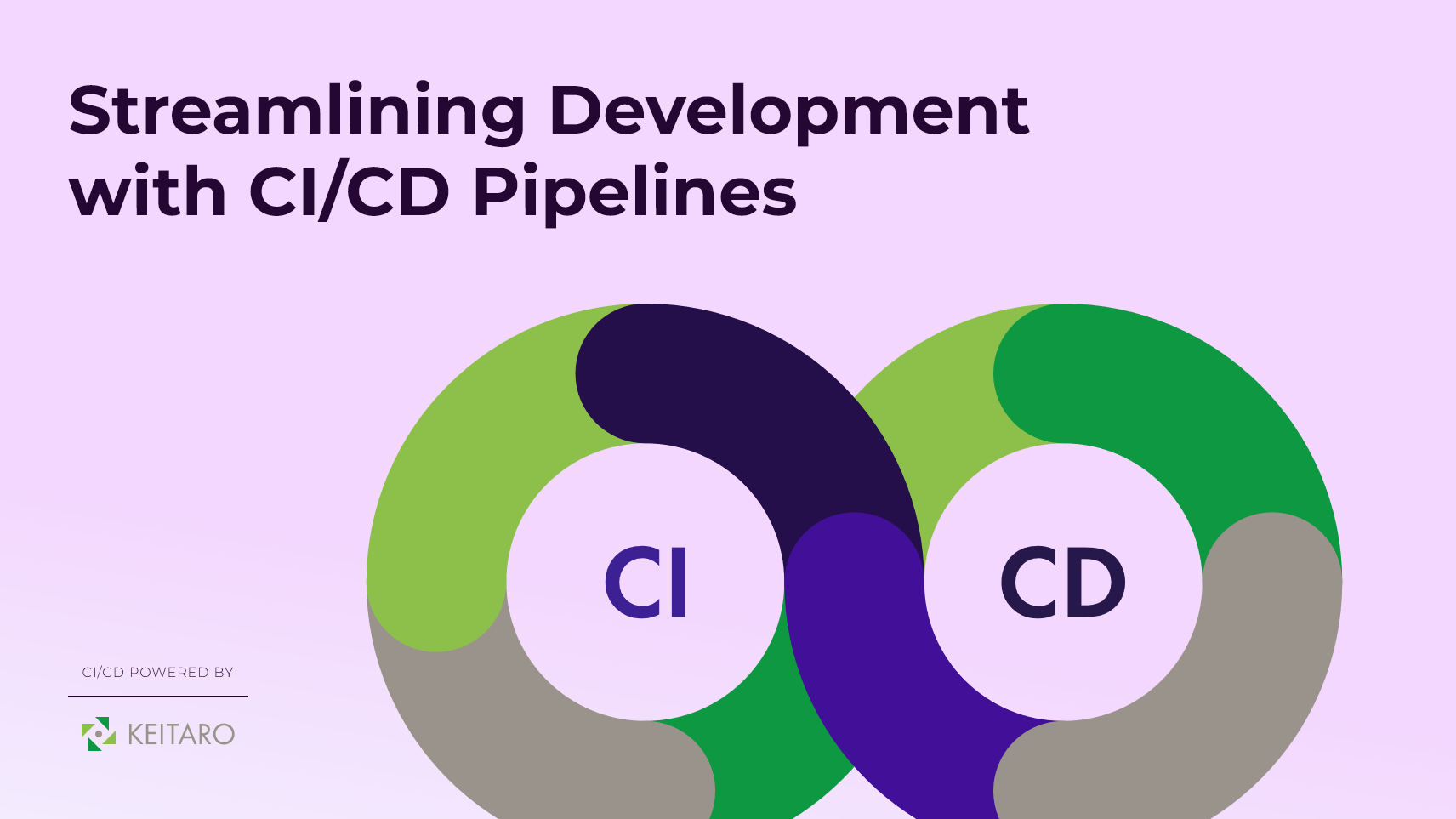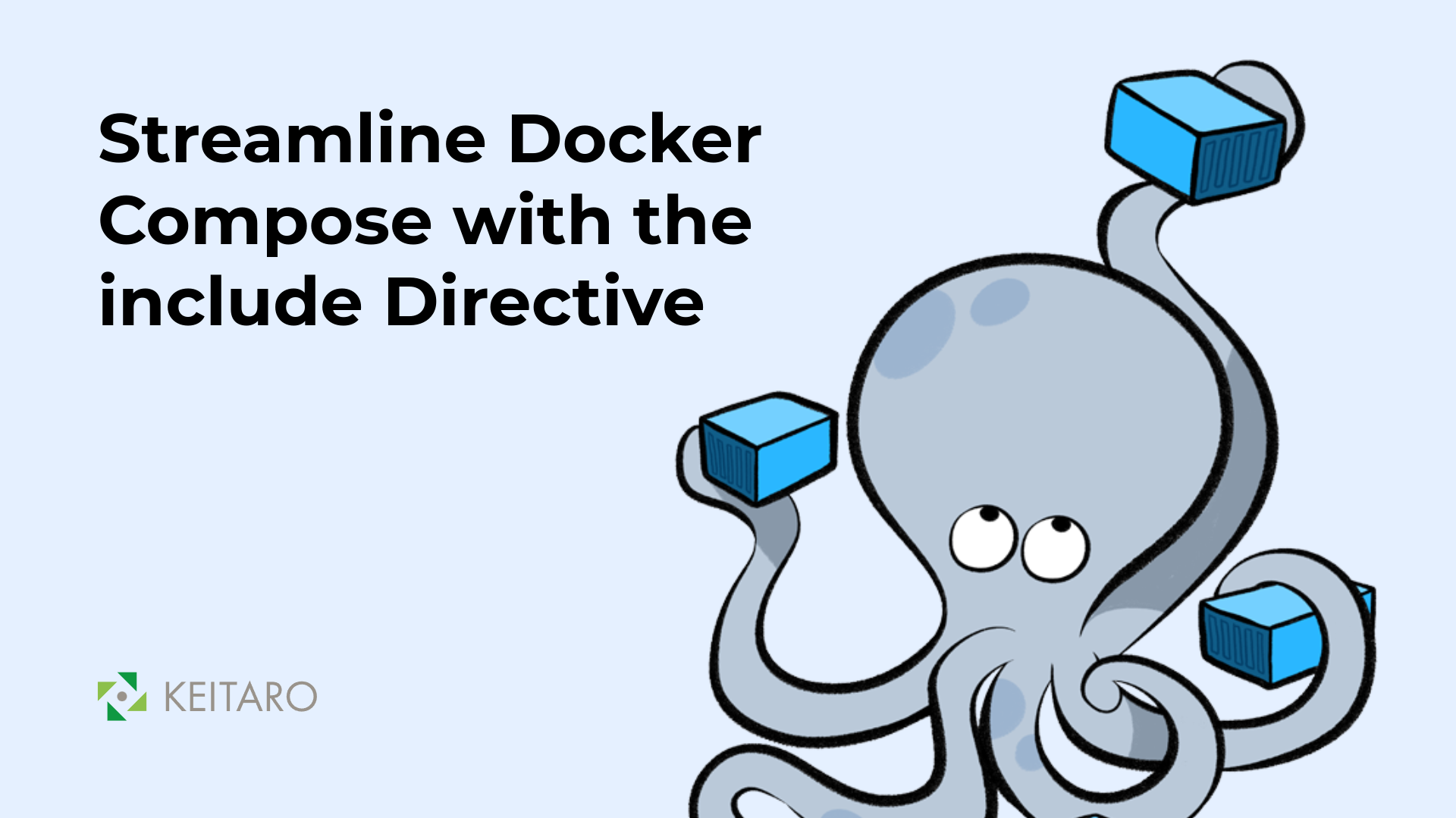Continuous integration and continuous delivery (CI/CD) is a software development approach that automates the software delivery process. It allows teams to frequently release software updates with confidence, knowing that their code has been thoroughly tested and deployed in a reliable manner.
CI/CD pipelines are a key component of modern software development. They help teams to streamline their development process, reduce errors, and deliver high-quality software to their users faster.
CI/CD Explained: Continuous Integration & Continuous Delivery in Action
Continuous integration (CI) is the practice of merging code changes into a central repository frequently and automating the build and test process. This helps to identify and fix errors early on, before they are merged into the main code branch.
Continuous delivery (CD) is the practice of automatically deploying code changes to production environments. This allows teams to release software updates more frequently, without having to go through a manual deployment process.
A typical CI/CD pipeline consists of the following stages:

Building an Effective CI/CD Pipeline: Best Practices and Tools
There are a number of best practices that teams can follow when building a CI/CD pipeline:
Start small: Don’t try to automate everything at once. Start by automating a few key stages of your development process, such as unit testing and code deployment.
Use version control: Version control is essential for CI/CD. It allows you to track code changes and revert to previous versions if necessary.
Test early and often: The sooner you can identify and fix errors, the less costly they will be to fix. Automate as many tests as possible, and run them frequently.
Use a CI/CD tool: There are a number of CI/CD tools available, both open source and commercial. These tools can help you to automate your CI/CD pipeline and make it easier to manage.
Real-World CI/CD Implementation
From small companies to global giants, many organizations have successfully implemented CI/CD practices. For example, Google uses CI/CD to deploy code changes to production multiple times per day. This allows them to release new features and bug fixes to their users quickly and reliably. Amazon uses CI/CD to deploy code changes to its production environment every 11 seconds. This allows them to scale their services quickly and meet the demands of their customers. Another good example is Netflix. Netflix CI/CD to deploy code changes to production thousands of times per day. This allows them to release new shows and movies to their subscribers quickly and without disruption.
Challenges of CI/CD implementation:
- Cultural change: CI/CD requires a shift in culture from traditional waterfall development to a more agile approach. This can be difficult to achieve, especially in large organizations.
- Technical challenges: Implementing and managing a CI/CD pipeline can be complex. Teams need to have the necessary skills and expertise to set up and maintain their pipeline.
- Cost: CI/CD tools can be expensive, especially for enterprise organizations.
Despite the challenges, implementing CI/CD can provide significant benefits for software development teams. CI/CD pipelines can help teams to streamline their development process, reduce errors, and deliver high-quality software to their users faster.
Conclusion
CI/CD pipelines are a powerful tool for streamlining software development. By automating the build, test, and deployment process, CI/CD can help teams release software updates more frequently and with confidence.
If you are not already using CI/CD in your software development process, I encourage you to give it a try. You may be surprised at how much it can improve your team’s productivity and efficiency.
Need help with setting up CI/CD? Contact us for a free consultation with one of our DevOps experts.



